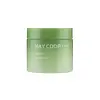What's inside
What's inside
 Key Ingredients
Key Ingredients

 Benefits
Benefits

 Concerns
Concerns

 Ingredients Side-by-side
Ingredients Side-by-side

Water
Skin ConditioningDimethicone
EmollientGlycerin
HumectantCetearyl Olivate
Polyacrylamide
Sorbitan Olivate
EmulsifyingPhenoxyethanol
PreservativeDimethicone/Vinyl Dimethicone Crosspolymer
Skin ConditioningSynthetic Beeswax
Emulsion StabilisingC13-14 Isoparaffin
EmollientDimethiconol
EmollientDimethicone Crosspolymer
Emulsion StabilisingChlorphenesin
AntimicrobialLaureth-7
EmulsifyingCarbomer
Emulsion StabilisingSodium Hyaluronate
HumectantEthylhexylglycerin
Skin ConditioningC12-14 Pareth-12
EmulsifyingSodium Hydroxide
BufferingWater, Dimethicone, Glycerin, Cetearyl Olivate, Polyacrylamide, Sorbitan Olivate, Phenoxyethanol, Dimethicone/Vinyl Dimethicone Crosspolymer, Synthetic Beeswax, C13-14 Isoparaffin, Dimethiconol, Dimethicone Crosspolymer, Chlorphenesin, Laureth-7, Carbomer, Sodium Hyaluronate, Ethylhexylglycerin, C12-14 Pareth-12, Sodium Hydroxide
Bambusa Arundinacea Juice
AbrasiveButylene Glycol
HumectantGlycerin
HumectantDimethicone
EmollientCyclopentasiloxane
Emollient1,2-Hexanediol
Skin ConditioningPolyglyceryl-6 Stearate
EmollientWater
Skin ConditioningDimethicone/Vinyl Dimethicone Crosspolymer
Skin ConditioningHydroxyethyl Acrylate/Sodium Acryloyldimethyl Taurate Copolymer
Emulsion StabilisingArgania Spinosa Kernel Oil
EmollientSqualane
EmollientGlycosyl Trehalose
Emulsion StabilisingHydrogenated Starch Hydrolysate
HumectantAcrylates/C10-30 Alkyl Acrylate Crosspolymer
Emulsion StabilisingPolyglyceryl-6 Behenate
Emulsion StabilisingCaprylyl Glycol
EmollientTromethamine
BufferingPanthenol
Skin ConditioningEthylhexylglycerin
Skin ConditioningParfum
MaskingDisodium EDTA
Xanthan Gum
EmulsifyingBiosaccharide Gum-1
HumectantCeramide NP
Skin ConditioningSalvia Officinalis Leaf Extract
CleansingFoeniculum Vulgare Seed Extract
Skin ConditioningBambusa Vulgaris Stem Extract
Moringa Oleifera Seed Extract
Skin ConditioningNelumbo Nucifera Flower Extract
Skin ConditioningBambusa Vulgaris Leaf Extract
Skin ConditioningGlycyrrhiza Glabra Root Extract
BleachingBambusa Vulgaris Flower Extract
Skin ConditioningBambusa Vulgaris Callus Culture Extract
Skin ConditioningBambusa Vulgaris Shoot Extract
AntioxidantLaminaria Japonica Extract
Skin ProtectingMaltodextrin
AbsorbentMelaleuca Alternifolia Leaf Extract
PerfumingCornus Officinalis Fruit Extract
Skin ConditioningBiotin
AntiseborrhoeicPlankton Extract
Skin ConditioningCentella Asiatica Extract
CleansingArginine Ferulate
Skin ConditioningSodium Hyaluronate
HumectantBambusa Arundinacea Juice, Butylene Glycol, Glycerin, Dimethicone, Cyclopentasiloxane, 1,2-Hexanediol, Polyglyceryl-6 Stearate, Water, Dimethicone/Vinyl Dimethicone Crosspolymer, Hydroxyethyl Acrylate/Sodium Acryloyldimethyl Taurate Copolymer, Argania Spinosa Kernel Oil, Squalane, Glycosyl Trehalose, Hydrogenated Starch Hydrolysate, Acrylates/C10-30 Alkyl Acrylate Crosspolymer, Polyglyceryl-6 Behenate, Caprylyl Glycol, Tromethamine, Panthenol, Ethylhexylglycerin, Parfum, Disodium EDTA, Xanthan Gum, Biosaccharide Gum-1, Ceramide NP, Salvia Officinalis Leaf Extract, Foeniculum Vulgare Seed Extract, Bambusa Vulgaris Stem Extract, Moringa Oleifera Seed Extract, Nelumbo Nucifera Flower Extract, Bambusa Vulgaris Leaf Extract, Glycyrrhiza Glabra Root Extract, Bambusa Vulgaris Flower Extract, Bambusa Vulgaris Callus Culture Extract, Bambusa Vulgaris Shoot Extract, Laminaria Japonica Extract, Maltodextrin, Melaleuca Alternifolia Leaf Extract, Cornus Officinalis Fruit Extract, Biotin, Plankton Extract, Centella Asiatica Extract, Arginine Ferulate, Sodium Hyaluronate
 Reviews
Reviews

Ingredients Explained
These ingredients are found in both products.
Ingredients higher up in an ingredient list are typically present in a larger amount.
Dimethicone is a type of synthetic silicone created from natural materials such as quartz.
What it does:
Dimethicone comes in different viscosities:
Depending on the viscosity, dimethicone has different properties.
Ingredients lists don't always show which type is used, so we recommend reaching out to the brand if you have questions about the viscosity.
This ingredient is unlikely to cause irritation because it does not get absorbed into skin. However, people with silicone allergies should be careful about using this ingredient.
Note: Dimethicone may contribute to pilling. This is because it is not oil or water soluble, so pilling may occur when layered with products. When mixed with heavy oils in a formula, the outcome is also quite greasy.
Learn more about DimethiconeThis ingredient is a silicone used to improve the texture of products and absorb oil. It does not get absorbed into the skin.
Like other silicones, Dimethicone/Vinyl Dimethicone Crosspolymer helps condition the skin by creating a barrier. In this sense, it can act as an emollient and trap moisture in.
This ingredient is a type of elastomer.
Learn more about Dimethicone/Vinyl Dimethicone CrosspolymerEthylhexylglycerin (we can't pronounce this either) is commonly used as a preservative and skin softener. It is derived from glyceryl.
You might see Ethylhexylglycerin often paired with other preservatives such as phenoxyethanol. Ethylhexylglycerin has been found to increase the effectiveness of these other preservatives.
Glycerin is already naturally found in your skin. It helps moisturize and protect your skin.
A study from 2016 found glycerin to be more effective as a humectant than AHAs and hyaluronic acid.
As a humectant, it helps the skin stay hydrated by pulling moisture to your skin. The low molecular weight of glycerin allows it to pull moisture into the deeper layers of your skin.
Hydrated skin improves your skin barrier; Your skin barrier helps protect against irritants and bacteria.
Glycerin has also been found to have antimicrobial and antiviral properties. Due to these properties, glycerin is often used in wound and burn treatments.
In cosmetics, glycerin is usually derived from plants such as soybean or palm. However, it can also be sourced from animals, such as tallow or animal fat.
This ingredient is organic, colorless, odorless, and non-toxic.
Glycerin is the name for this ingredient in American English. British English uses Glycerol/Glycerine.
Learn more about GlycerinSodium Hyaluronate is hyaluronic acid's salt form. It is commonly derived from the sodium salt of hyaluronic acid.
Like hyaluronic acid, it is great at holding water and acts as a humectant. This makes it a great skin hydrating ingredient.
Sodium Hyaluronate is naturally occurring in our bodies and is mostly found in eye fluid and joints.
These are some other common types of Hyaluronic Acid:
Learn more about Sodium HyaluronateWater. It's the most common cosmetic ingredient of all. You'll usually see it at the top of ingredient lists, meaning that it makes up the largest part of the product.
So why is it so popular? Water most often acts as a solvent - this means that it helps dissolve other ingredients into the formulation.
You'll also recognize water as that liquid we all need to stay alive. If you see this, drink a glass of water. Stay hydrated!
Learn more about Water